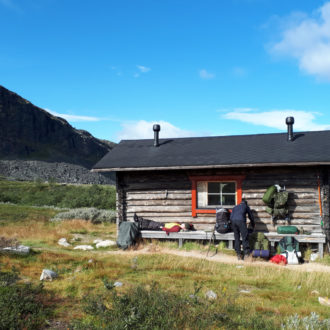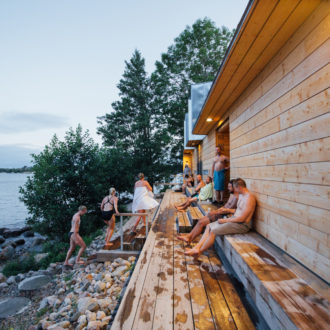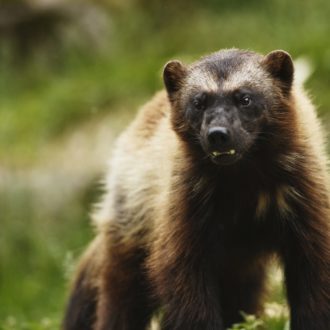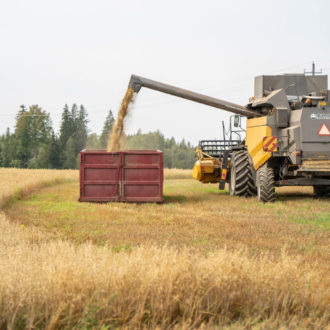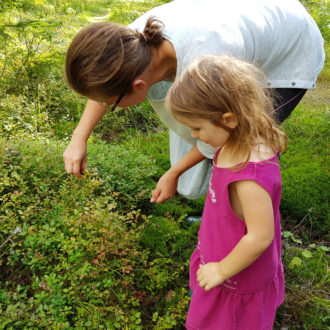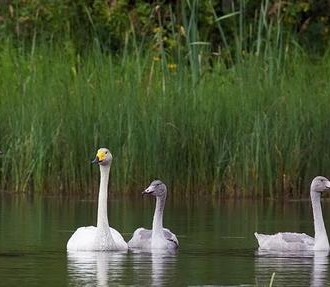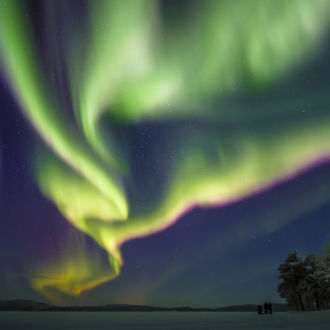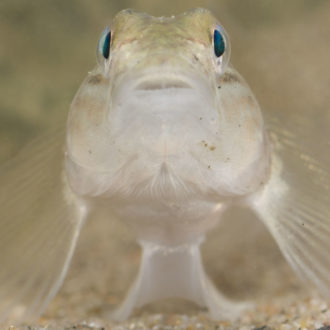The popularity of the great outdoors has increased during the past decade.
In 2020 and 2021, despite Covid-19 pandemic restrictions on international travel, visitor numbers in Finnish national parks reached an all-time high. Despite a slight decrease in 2022, it was still the third-highest year on record, with more than 3.5 million visits to Finland’s 41 national parks.
The parks serve a dual purpose of conservation and recreation – they are nature conservation areas, but they are also open for everyone to experience and enjoy. There is a fine balance: nature thrives better without too much human interference.
The world’s cleanest air
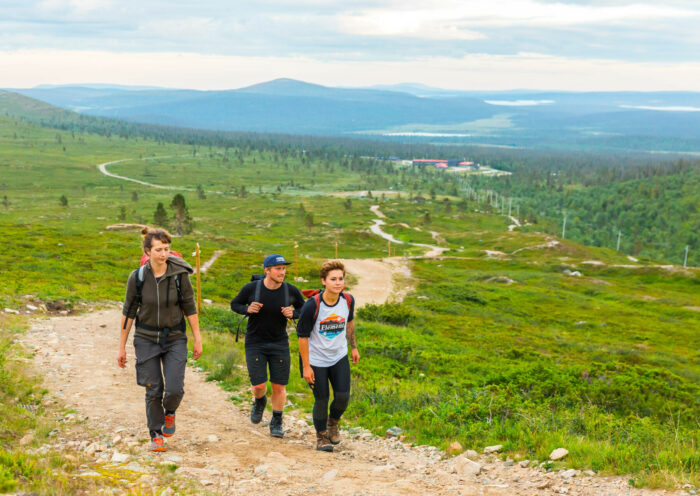
People who visit Pallas-Yllästunturi, Finland’s most popular national park, say that they come for the landscape, nature experiences, relaxation and mental wellbeing.Photo: Julia Kivelä/Kuru Resort/Visit Finland
The most popular of Finland’s national parks, by far, is Pallas-Yllästunturi, which received almost 600,000 visitors in 2022. Situated in northwestern Finland, it covers an area of more than 1,000 square kilometres (385 square miles). The region prides itself on having the cleanest air in the world according to World Health Organisation statistics.
A visitor survey found that the main reasons for visiting Pallas-Yllästunturi National Park were the landscape, nature experiences, relaxation and mental wellbeing.
The most popular activities in the park are cross-country skiing during the winter and walking during the summer. Bordering the national park are several ski resorts, where thousands of Finns spend their winter holidays.
Popular yet hidden

Kurjenrahka National Park, near the city of Turku in southwestern Finland, is known as the summer home of migratory birds such as cranes.Photo: Katri Lehtola/Visit Finland
Despite the visitor numbers, Pallas-Yllästunturi National Park seems to be a relatively hidden gem for foreign tourists. A 2016 survey found only 4 percent of visitors came from outside of Finland. During the pandemic, that category dropped to just 1 percent.
By comparison, in 2019, 6.6 percent of all national park visitors were foreign tourists. The share at the other top-five parks ranges from 6 to 11 percent.
Famous landscapes

Snowshoers make their way past snow-covered trees in Koli National Park in eastern Finland.Photo: Ismo Pekkarinen/Lehtikuva
Of the other parks in the top five, Urho Kekkonen and Pyhä-Luosto (numbers two and five) are also situated in Lapland, in the Finnish far north, while Koli (number four) lies in eastern Finland. All offer extensive possibilities for hiking and skiing. Koli is also famous for its landscapes, which were inspiring Finnish artists as far back as the late 1800s, including painters Venny Soldan-Brofeldt, Pekka Halonen and Eero Järnefelt; photographer I.K. Inha; and composer Jean Sibelius.
Nuuksio, the third most visited park, is located almost next door to Helsinki. Its forests are an easy choice for the million-plus people living in the capital region when they want to go on an outdoor excursion.
A variety of parks

Flowers fill a meadow with summer colour in Etelä-Konnevesi National Park, located between the cities of Jyväskylä and Kuopio in central Finland.Photo: Julia Kivelä/Visit Finland
Henrik Jansson is director of Parks & Wildlife Finland, which manages the national parks. It is part of Metsähallitus (which simply means “forest administration”), the state enterprise that manages state-owned land and water across the country.
“Our task is to make nature visits available,” he says. “The problem is that we have some hotspots that draw lots of people, while some are quieter. We wish that some of these people would decide to go to the less-visited places instead, but it’s difficult to control that.”
Jansson says that social media can have an unpredictable effect on visitor numbers. A few nice photos from an influencer with a large audience may bring a sudden surge to a given location.
Exploring the wilderness
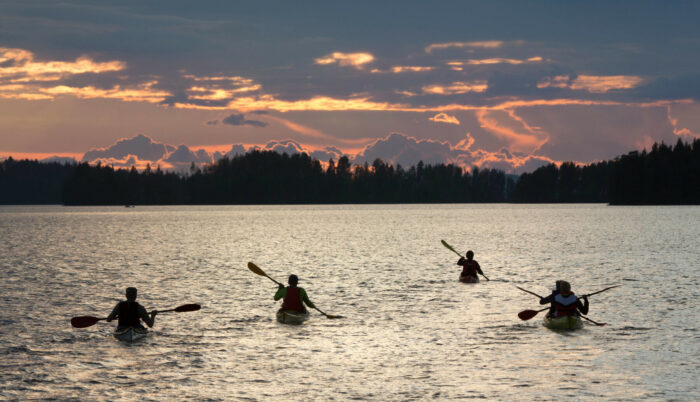
The magical northern summer days, when the sun hardly sets at all, mean you can continue paddling long into the evening, as this expedition is doing in Etelä-Konnevesi National Park in central Finland.Photo: Tea Karvinen/Visit Finland
In many countries, you need to pay an entrance fee for national parks, or access may be limited by daily quotas. Jansson says that these ideas pop up in discussions now and then, but they would not really suit Finland, with its strong tradition of every person’s right.
Every person’s right is a legal tradition unique to the Nordic countries. It allows Finns and foreigners alike to explore Finland’s wilderness and pick tasty wild berries and mushrooms, even on privately owned land.
“Our aim is to increase equal access for everyone,” says Jansson. “We do restrict movement in certain sensitive areas, such as birds’ nesting areas.”
National park staff maintains trail networks in the parks. While it is permitted to walk off-trail (with some exceptions), most visitors do keep to the indicated paths, which helps minimise disturbance to the surrounding wilderness. Some parks feature designated trails for mountain biking, too.
Quiet beauty
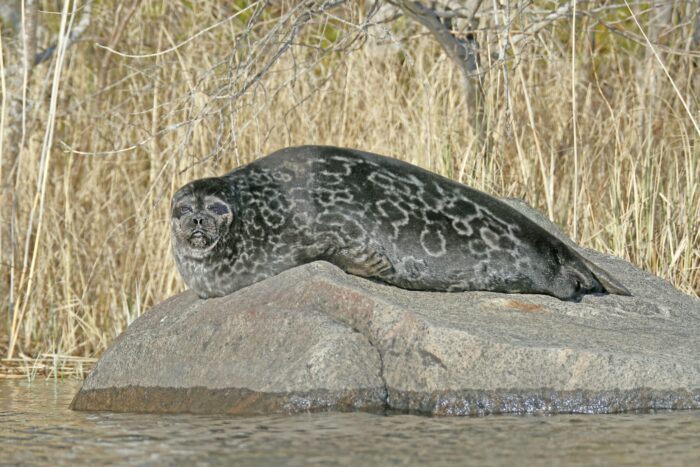
In Kolovesi National Park in eastern Finland, you may be lucky enough to glimpse the reclusive and gravely endangered Saimaa ringed seal.Photo: Ismo Pekkarinen/Lehtikuva
Even the most popular parks contain plentiful pockets of peace and quiet. However, those looking for more tranquillity might prefer to check the other end of the visitor statistics. The wilderness in the last five parks on the list is still beautiful.
For example, Kolovesi National Park, in eastern Finland between the cities of Varkaus and Joensuu, is one of the prime locations for seeing the gravely endangered Saimaa ringed seal, a freshwater species endemic to Finland.
The vast mires of Patvinsuo, on the other hand, offer a very different experience. Swamps and bogs are carbon sinks and unsung heroes of biodiversity, providing habitat for birds, butterflies, plants and mosses, as well as large mammals.
Visiting remote locations
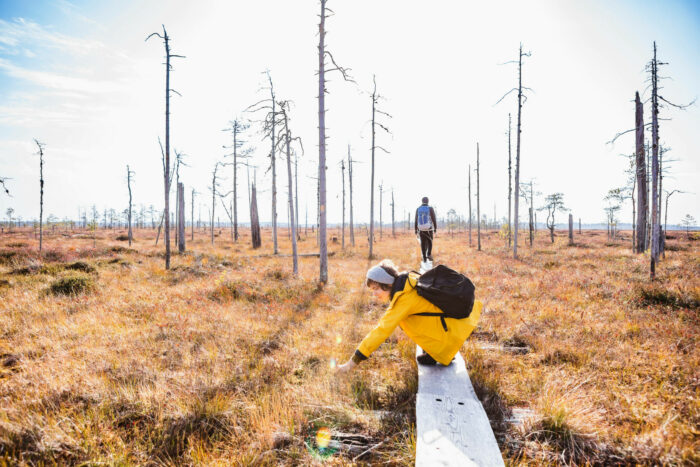
Duckboards form a path through Patvinsuo National Park, which features a fascinating and ecologically vital landscape of mires and bogs.Photo: Ulla Keituri/Visit Finland
The least visited of them all is Bothnian Bay National Park, which consists of a group of islands and the surrounding waters in the northernmost part of the Baltic Sea.
Getting there can be a challenge. There are no scheduled ferries to the park’s islands. Taxi boats are available, but rather costly. In the winter, it is possible to ski across the frozen sea, but that is definitely not for beginners.
Similar issues are characteristic of some of the other less visited national parks. They are in relatively remote locations, beyond most public transport.
Increasing possibilities
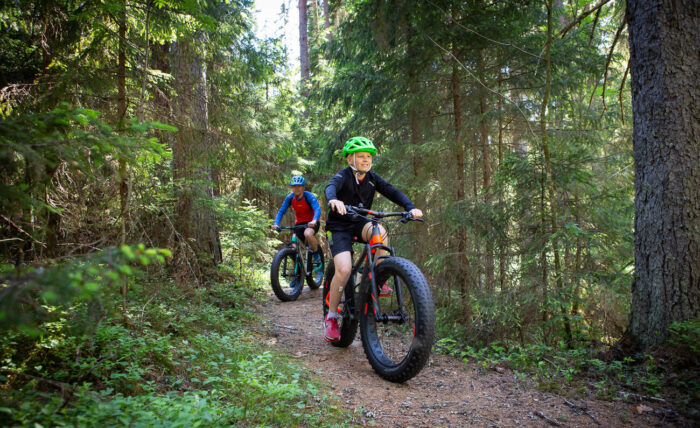
By designating certain trails for bicycle use, such as this one at Seitseminen National Park, north of the city of Tampere, organisers ensure that everyone can enjoy the outdoors while minimising environmental impact.Photo: Salla Penttilä/Visit Tampere
Jansson says that Parks & Wildlife Finland is looking for ways to increase public transport possibilities.
In one successful example, they cooperated with VR, the national railway company: In the summer of 2022, two daily trains started servicing Hillosensalmi, an old station that had been dormant for 20 years. It is located near Repovesi National Park in southeastern Finland.
The trial proved so popular that VR expanded the season the following year, to a whole six months starting in late April.
By Juha Mäkinen, May 2023
The five most popular Finnish national parks*
- 1. Pallas-Yllästunturi 594,300 visitors
- 2. Urho Kekkonen 405,400
- 3. Nuuksio 306,700
- 4. Koli 251,400
- 5. Pyhä-Luosto 203,600
The five least visited national parks
- Patvinsuo 16,900
- Gulf of Finland 15,000
- Kolovesi 14,600
- Hiidenportti 11,300
- Bothnian Bay 5,800
*Statistics from 2022

